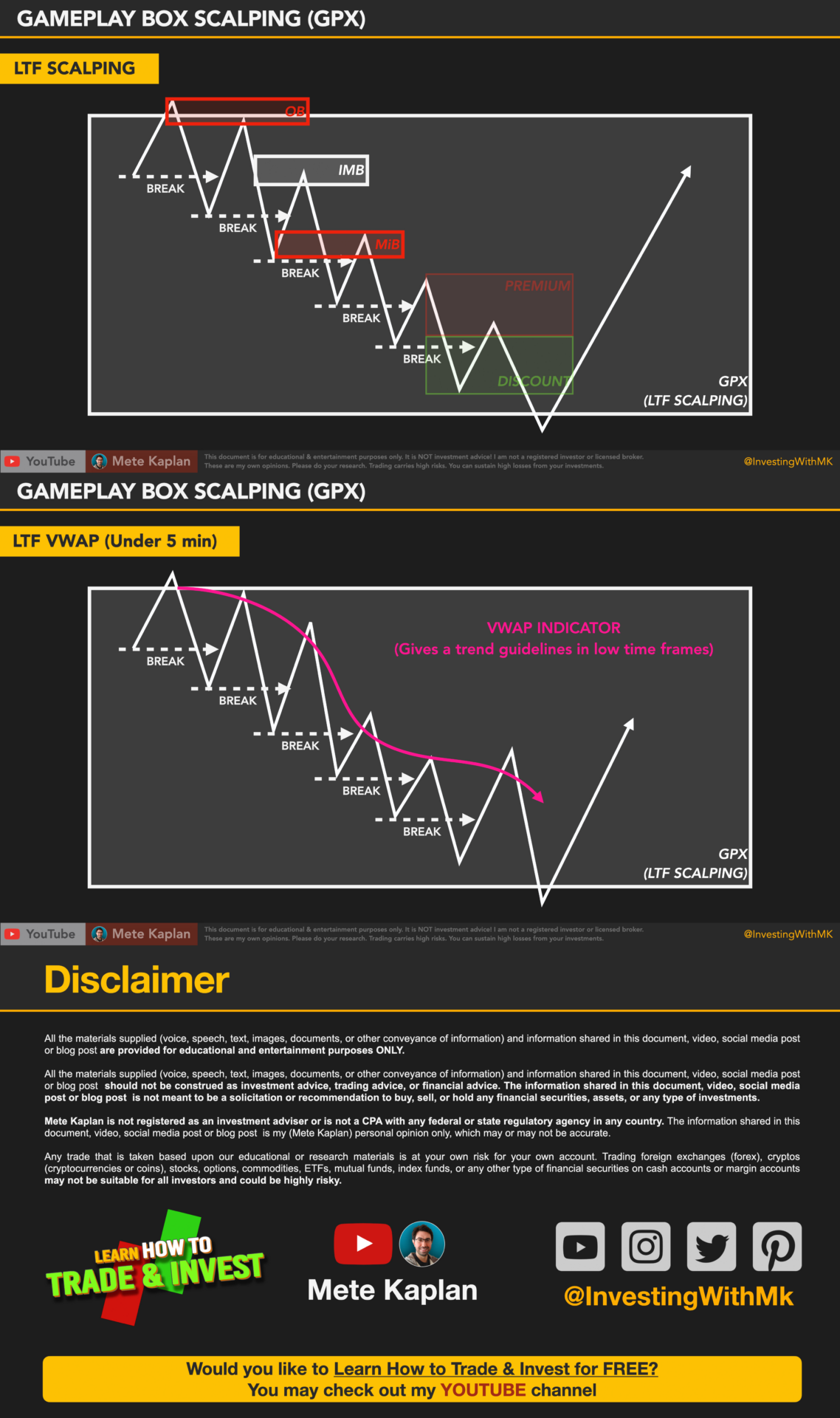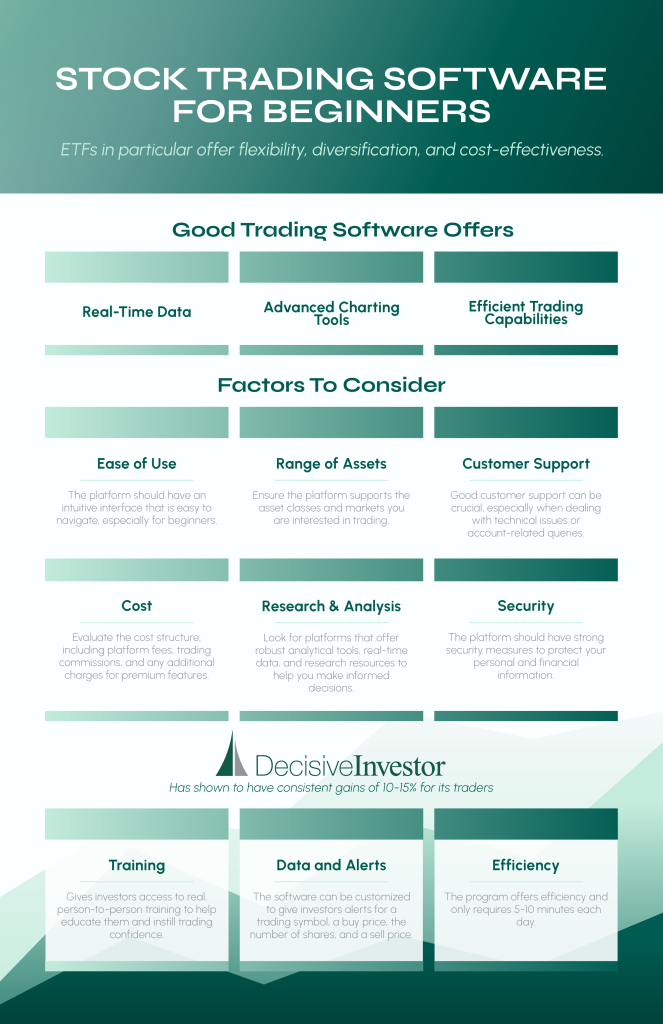Did you know that the first exchange-traded fund (ETF) was launched in 1993, and now there are thousands to choose from? In this article, we dive into the best ETFs for day trading in 2023, highlighting top picks, essential characteristics, and the most lucrative sectors. We’ll guide you on how to select suitable ETFs, analyze their liquidity, and understand the risks involved. Discover popular leveraged ETFs, effective strategies, and the impact of market conditions and volatility on your trading decisions. Additionally, we’ll cover expense ratios, real-time data resources, and tools perfect for beginners in day trading. Join us at DayTradingBusiness as we equip you with the knowledge to navigate the exciting world of ETF day trading effectively.
What are the top ETFs for day trading in 2023?
The top ETFs for day trading in 2023 include:
1. SPDR S&P 500 ETF (SPY) – High liquidity and tracks the S&P 500.
2. Invesco QQQ (QQQ) – Focuses on tech stocks, offering volatility and quick movements.
3. iShares Russell 2000 ETF (IWM) – Targets small-cap stocks, ideal for active trading.
4. Direxion Daily Financial Bull 3X Shares (FAS) – Leverages financial sector gains, good for aggressive traders.
5. ProShares UltraPro QQQ (TQQQ) – A leveraged option that amplifies QQQ’s returns.
These ETFs provide the liquidity, volatility, and price movements that day traders seek.
How do I choose the best ETFs for day trading?
To choose the best ETFs for day trading, focus on these criteria:
1. Liquidity: Look for ETFs with high trading volumes. This ensures you can buy and sell without large price impacts.
2. Volatility: Select ETFs that show significant price movements throughout the day. Higher volatility can lead to better profit opportunities.
3. Sector Focus: Consider ETFs that track sectors with news catalysts, like technology or biotech, as they often experience sharp price changes.
4. Expense Ratio: Choose ETFs with low expense ratios to minimize costs, especially since day trading involves frequent transactions.
5. Market Trends: Analyze current market trends and economic indicators to identify which sectors or themes are gaining momentum.
6. Technical Analysis: Use charts to study the ETF’s price patterns. Look for those that consistently hit support and resistance levels.
Some popular ETFs for day trading include SPDR S&P 500 ETF (SPY), Invesco QQQ Trust (QQQ), and iShares Russell 2000 ETF (IWM) due to their liquidity and volatility.
What characteristics make an ETF suitable for day trading?
An ETF suitable for day trading typically has high liquidity, which allows for quick buying and selling without large price changes. It should have tight bid-ask spreads to minimize trading costs. Look for ETFs with high volatility, as this can create opportunities for profit within a single day. Additionally, consider those that track popular indices or sectors, as they tend to have more trading activity. Finally, check for adequate volume; generally, an average daily volume of at least 1 million shares is ideal.
Which sectors have the best day trading ETFs?
The best sectors for day trading ETFs include technology, healthcare, and financials. Technology ETFs, like QQQ, offer high volatility and liquidity. Healthcare ETFs, like XLV, can capitalize on news-driven price movements. Financials, such as XLF, often react strongly to economic data. These sectors tend to have significant trading volume and can provide good opportunities for quick gains.
What are the most popular leveraged ETFs for day trading?
The most popular leveraged ETFs for day trading include:
1. SPDR S&P 500 ETF Trust (SPY) – Tracks the S&P 500 with high liquidity.
2. ProShares UltraPro QQQ (TQQQ) – Leverages the NASDAQ-100, offering triple the daily returns.
3. Direxion Daily Financial Bull 3X Shares (FAS) – Focuses on financial sector gains, also leveraging 3x returns.
4. ProShares Ultra VIX Short-Term Futures ETF (UVXY) – Targets volatility and is popular for short-term trading.
5. Direxion Daily Small Cap Bull 3X Shares (TNA) – Leverages small-cap stocks with potential for rapid gains.
These ETFs are favored for their volatility and liquidity, making them suitable for day trading strategies.
How do I analyze ETF liquidity for day trading?
To analyze ETF liquidity for day trading, focus on these key factors:
1. Average Daily Volume: Look for ETFs with high average daily trading volume, ideally over 1 million shares. This indicates active trading and easier entry/exit.
2. Bid-Ask Spread: Check the bid-ask spread; narrower spreads suggest better liquidity. Aim for spreads less than $0.10 for efficient trading.
3. Market Capitalization: Prioritize larger ETFs with higher market caps, as they typically have more liquidity.
4. Tracking Error: Low tracking error means the ETF closely follows its index, which can also affect liquidity.
5. Intra-day Price Movements: Analyze how the ETF reacts to market news and events. High volatility can present trading opportunities but also risks.
6. Liquidity Providers: Research if major market makers are involved, as they can enhance liquidity.
7. Use of Level 2 Quotes: Monitor Level 2 data to see real-time bid and ask prices, which helps gauge depth and liquidity.
By focusing on these aspects, you can effectively assess ETF liquidity for day trading.
What risks should I consider when day trading ETFs?

When day trading ETFs, consider these risks:
1. Market Volatility: ETFs can experience rapid price swings, leading to potential losses.
2. Liquidity Issues: Low trading volume can result in wider bid-ask spreads, impacting your entry and exit prices.
3. Overtrading: Frequent buying and selling can incur high transaction costs and lead to emotional decision-making.
4. Leverage Risks: Using leveraged ETFs amplifies both gains and losses, increasing risk.
5. Regulatory Changes: Changes in regulations can affect ETF performance and trading strategies.
6. Tracking Errors: An ETF may not perfectly track its underlying index, leading to unexpected outcomes.
7. Short-Term Focus: Day trading requires constant market monitoring, which can be stressful and time-consuming.
Stay informed and manage these risks to trade effectively.
Are there specific strategies for day trading ETFs?
Yes, specific strategies for day trading ETFs include:
1. Liquidity Focus: Choose ETFs with high trading volume to ensure easy entry and exit.
2. Volatility Analysis: Look for ETFs that exhibit significant price movement, as this can lead to higher profit potential.
3. Technical Indicators: Use tools like moving averages, RSI, and MACD to identify entry and exit points.
4. News Monitoring: Stay updated on market news and economic reports that impact sectors tied to your chosen ETFs.
5. Risk Management: Set strict stop-loss orders to limit losses and protect gains.
6. Timeframes: Trade on shorter timeframes, like 1-minute or 5-minute charts, to capture quick price movements.
7. Diversification: Consider trading multiple ETFs across different sectors to spread risk.
These strategies can enhance your day trading effectiveness with ETFs.
How do expense ratios affect day trading ETFs?
Expense ratios impact day trading ETFs by reducing overall profits. Higher expense ratios mean more costs that eat into gains from quick trades. Lower expense ratios are preferable because they allow more of your investment to work for you. When selecting ETFs for day trading, look for those with low expense ratios to maximize potential returns.
What are the best index ETFs for day trading?
The best index ETFs for day trading include:
1. SPDR S&P 500 ETF (SPY) – High liquidity and tight spreads.
2. Invesco QQQ Trust (QQQ) – Tracks the Nasdaq-100, good for tech stocks.
3. iShares Russell 2000 ETF (IWM) – Focuses on small-cap stocks, offering volatility.
4. Vanguard S&P 500 ETF (VOO) – Low expense ratio, reliable for quick trades.
5. SPDR Dow Jones Industrial Average ETF (DIA) – Represents 30 large companies, stable movements.
Choose based on your trading strategy and market conditions.
How do market conditions impact ETF day trading?

Market conditions significantly impact ETF day trading by influencing volatility, liquidity, and price movement. In a bullish market, ETFs tend to show upward momentum, providing opportunities for quick profits. Conversely, bearish conditions may lead to rapid declines, increasing risk. High volatility days can create wider price swings, which day traders exploit, while low-volatility days may limit potential gains. Additionally, liquidity affects how easily you can enter or exit positions; ETFs with higher trading volumes are preferable for day trading to minimize slippage. Overall, staying attuned to market conditions is crucial for selecting the best ETFs for day trading.
What role does volatility play in selecting day trading ETFs?
Volatility is crucial in selecting day trading ETFs because it creates opportunities for quick price movements, allowing traders to capitalize on short-term gains. Higher volatility means larger potential price swings, which can lead to significant profits within a single trading day. Look for ETFs with a history of consistent volatility, as this can enhance your chances of making profitable trades. Additionally, consider the ETF's liquidity; more volatile ETFs with high trading volume can facilitate easier entry and exit points.
Learn about The Role of Implied Volatility in Day Trading Options
What Are the Top ETFs for Successful Day Trading?
The best ETFs for day trading include SPDR S&P 500 ETF (SPY), Invesco QQQ Trust (QQQ), and iShares Russell 2000 ETF (IWM). Other strong options are the Financial Select Sector SPDR Fund (XLF) and the Technology Select Sector SPDR Fund (XLK) due to their high liquidity and volatility, which are ideal for day trading strategies.
Learn more about: What Are the Best ETFs for Day Trading?
How can I find real-time data on day trading ETFs?
To find real-time data on day trading ETFs, use financial news websites like Yahoo Finance or CNBC, and consider platforms like TradingView or Thinkorswim for live charts. Look for ETFs with high liquidity, such as SPY or QQQ, as they often have up-to-the-minute data. Many brokerage platforms also offer real-time quotes and market analysis tools specifically for day trading.
Learn about How to Choose Day Trading ETFs?
What are the best ETFs for beginners in day trading?
The best ETFs for beginners in day trading include SPDR S&P 500 ETF (SPY), Invesco QQQ Trust (QQQ), and iShares Russell 2000 ETF (IWM). These ETFs have high liquidity, tight bid-ask spreads, and significant price movement, making them suitable for day trading. Additionally, consider the Vanguard S&P 500 ETF (VOO) and the Direxion Daily S&P 500 Bull 2X Shares (SPUU) for potential leverage. Always check volume and volatility before trading.
How do I set stop-loss orders with ETFs for day trading?
To set stop-loss orders with ETFs for day trading, first determine your entry price and the maximum loss you’re willing to accept. Once you have that, place a stop-loss order at a predetermined price below your entry point. For example, if you buy an ETF at $50 and want to limit losses to 2%, set your stop-loss at $49. Keep your stop-loss updated as the ETF price moves to protect gains. Use your trading platform to set these orders directly when placing your trades.
What tools and platforms are best for trading ETFs daily?

The best tools and platforms for trading ETFs daily include:
1. Brokerage Platforms: Look for platforms like TD Ameritrade, E*TRADE, and Charles Schwab. They offer robust trading tools and low commissions.
2. Trading Software: Use software like Thinkorswim or TradingView for advanced charting and real-time data.
3. Market News Services: Subscribe to services like Bloomberg or CNBC for timely market news and analysis.
4. Stock Screeners: Use screeners like Finviz or Yahoo Finance to filter ETFs based on volume and volatility.
5. Mobile Apps: Consider Robinhood or Webull for user-friendly mobile trading.
Focus on tools that provide fast execution, comprehensive research, and real-time analytics to enhance your day trading strategy.
Conclusion about What Are the Best ETFs for Day Trading?
In conclusion, selecting the best ETFs for day trading in 2023 requires careful consideration of factors such as liquidity, volatility, and sector performance. Understanding the characteristics that make an ETF suitable for day trading, along with strategies for managing risks and expenses, is crucial for success. For those looking to enhance their trading experience, DayTradingBusiness offers valuable insights and tools to navigate the dynamic world of ETFs effectively.